EXPLORING THE HEART OF THE PYRÉNÉES
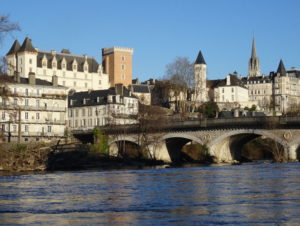
Travelling eastwards from the Basque region of the Pyrénées-Atlantiques, there are many more gems to discover. Pau, the capital of the department is set along the northern edge of the Pyrenees, has fine boulevards, an impressive castle and panoramic views of the mountains. There are little villages nestled in the high plateaux, stunning scenery, excellent ski slopes, glaciers, high altitude agricultural communities and rich gastronomic traditions such as the famous sauce Bearnaise.
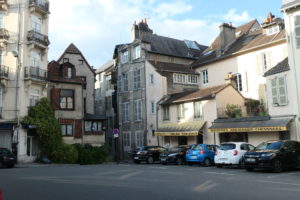
The small city of Pau is approx. 100 kms from the Atlantic and 50 kms from Spain. Its strategic position across the mountains of the Pyrenees made it a very attractive location for a fortified castle dating from the 11th century. When Pau became the capital of Bearn in 1464, it became the political, cultural and economic centre of the region. This status is reflected in the elegant architecture of the town’s important buildings and wide boulevards such as the beautiful Boulevard des Pyrénées.
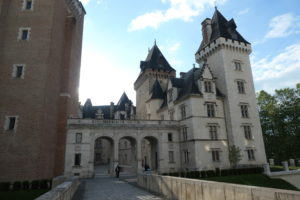
The town and its château took on even greater importance when it became the seat of the Kings of Navarre, and for a time, taken over by the Kingdom of Castile. Pau’s main claim to fame though is as the birthplace of Henry of Bourbon in 1553 in the castle of his grandparents. Henry attained the throne of France in 1589 and took the title Henry IV.
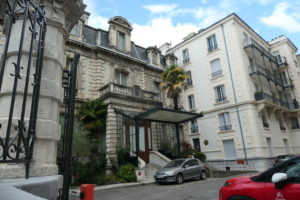
The Belle Époque saw a massive influx of wealthy foreign visitors who came to enjoy the health benefits of the winter climate and partake of the mineral baths and other treatments fashionable at the time—hence the large number of villas, mansions and extravagant hotels, as well as the railway station and a funicular.
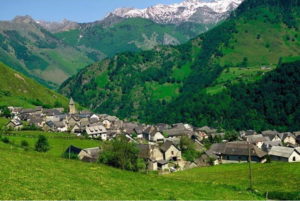
As a complete contrast to Pau, and heading south-east towards the Spanish border are a number of tiny villages, some no more than hamlets, perched on hilltops or nestled in the folds of hills. It’s an incredibly beautiful, lush, green, agricultural landscape where one can hear cowbells high up on the slopes, there are sheep grazing—somewhat precariously it seems—on steep hillsides, and any number of birds of prey circling.

We were strongly urged by a good friend who runs upmarket, small-scale cycling tours in Europe, to head to a small village, just 15kms south of Lourdes, called Saint-Savin, in the Hautes Pyrénées. Tucked into the hills, and overlooking the spa town of Argeles Gazost, the village even has its own little Romanesque church in the village square. The 12th century Abbatiale Romane de Saint-Savin-en-Lavedan was a Benedictine abbey and one of the most important religious centres of region. It’s said to have one of the oldest organs in France.
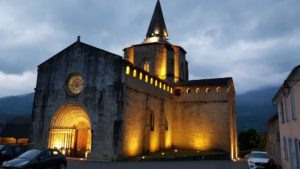
Aside from its very picturesque setting, the main claim to fame for Saint-Savin is a small family-run hotel, Le Viscos, whose beautifully appointed restaurant features traditional French mountain cuisine given a modern interpretation by the talented chef, Alexis Saint-Martin.
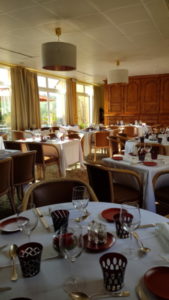
Virtually all the produce is sourced locally or from their own garden, and every dish and accompaniment made in-house. Without doubt, it was one of the most outstanding gastronomic experiences we’ve ever had. There are only 9 rooms, a number of which offer mountain views, but there is a terrace to relax and enjoy the stunning panorama, as well as a cosy lounge with fireplace for when the evening chill sets in. We can’t wait to return, but will make sure we’ve not eaten for at least a week beforehand!
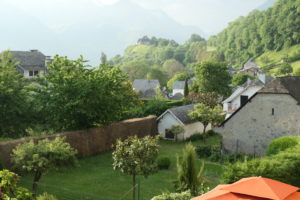
About a kilometre just up the road is a small church, the Chapelle Notre-Dame de Pietat, perched on a hilltop that we could see from the hotel terrace. Constructed in 1493, very little is known about its origin, but it is now a designated Monument Historique.
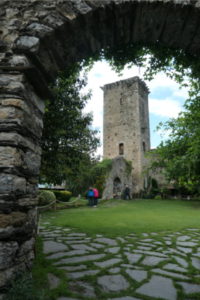
Across the valley from Saint-Savin is the ruined medieval château of Beaucens with its prominent donjon—tower—on a rocky outcrop visible from some distance away. We’d read about it and the people at hotel Le Viscos had recommended that we visit it, as it is home to one of the region’s most important bird sanctuaries, conservation and breeding projects, called Le Donjon des Aigles, on the outskirts of the village of Beaucens.
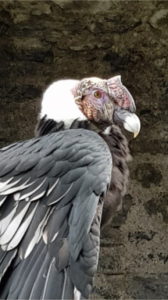
Between the walls of the ruined château, the sanctuary is home to a huge collection of diurnal and nocturnal vultures, eagles, fish eagles, kites, falcons and buzzards, while parrots come and visit during the summer. Although the birds are, to some extent confined, most are not caged or in bared enclosures.
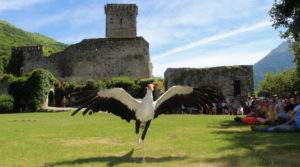
Their flight, accompanied by the multicoloured, noisy and sociable parrots, can be seen in the daily display of falconry. Although the birds have been somewhat tamed, the demonstrations are aimed at respecting their natural behaviour and habits in the wild. It’s a rare treat to be able to get ‘up close and personal’ with such majestic creatures. Note that the commentary during the display of falconry is only in French. The centre is open from spring to September.
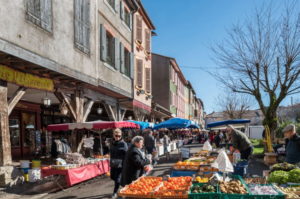
Further east in the Ariège department of the Midi-Pyrenees near the border with Languedoc-Roussillon, lies Mirepoix, one of the most interesting and attractive bastide towns of the region. Captured by Simon de Montfort in 1209, and after the vicissitudes of history, as well as a devastating flood in 1289 necessitating a total rebuild in 1290, it’s still very much a 13th century town.

Mirepoix has one of the finest surviving arcaded market squares—Les Couverts—in the country, bordered by colourful timber-framed houses dating from the 13th to the 15th centuries. The square is full of very pleasant little cafes and restaurants whose tables and chairs spill out across the square, and it seemed to us as though the entire town was out lounging in the sun, enjoying a coffee, drinks or dinner long into the night. It’s easy to understand why the town has a very pleasant, relaxed communal atmosphere!
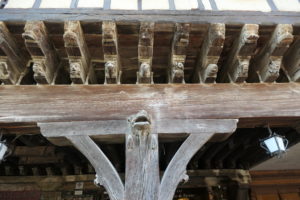
The town has a fine collection of notable historic buildings including the medieval Maison des Consuls (Council House) whose end rafters are carved with dozens of animals including a tortoise, fanciful monsters and caricatures of medieval professions, groups of locals, and intriguingly, a number of African heads.
At the other end of the square, outside the local tourist office which is housed in one of the lovely historic buildings, there are two grain measures dating from the 17th century which hold 20 litres of gain each. There is also an imposing 19th century wrought iron market hall in the middle of the square.
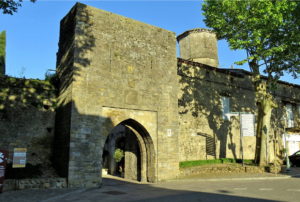
On the edge of town there is an impressive fortified entrance gate, La Porte d’Aval, dating from 1372, and a fine 18th century bridge, which is all that remains of the walls that once enclosed the town.
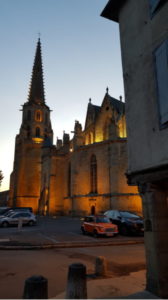
The town’s cathedral of St Maurice. Built in stages over 6oo years from the 13th century, it is said to have the second widest Gothic arch in Europe. The whole edifice is in immaculate condition having been restored by Prosper Mérimée and Viollet-le-Duc in the 19th century. Attached to the walls of the cathedral is the 16th century former bishop’s palace, built by the bishop of the time who wanted to be close to the centre of town.
There are a number of very good, small hotels occupying historic buildings right inside the town. It’s a perfect stopping-off point from the Pyrenees for those heading to Carcassonne, about 52 kms away, or further up into Provence.
But what if you’re curious to know about the furthermost reaches of the Pyrenees? There are so many more beautiful little villages and wonderful scenery to discover in this beautiful region of France—enough for a dozen lifetimes of travel experiences. To be continued…!
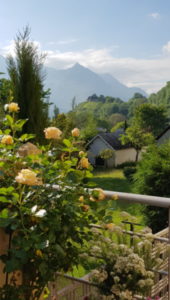


Thanks for a lovely descriptive article. I’d planned a possible visit next year, now it is a definite!
Hi Ruth,
It’s such a beautiful region, and I’m always surprised at how little it’s visited by non-French. I can’t imagine why that is, given it’s got everything visitors look for by way of scenery, amazing regional cuisine, glorious unspoiled natural sites, ease of getting about…the works! Let me know if there’s anything you’d like to ask or simply ass by me when you are planning a visit. Also: I’ve got another blog on the region coming up soon.
Cheers,Cheryl